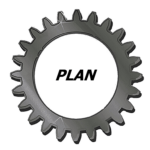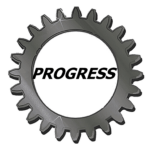Interrelationship Diagram
Interrationship Diagrams enable organizations to identify the critical factors that contribute to a particular outcome or goal, allowing for the development of effective strategies and the allocation of resources in the most efficient way possible.

Chapter 1: What is it?

Complex systems, such as organizations, supply chains, or ecological networks, consist of numerous interdependent elements and interactions. The interrelationship diagram helps unravel these intricate connections, allowing us to gain valuable insights into how the system functions as a whole. By visualizing the relationships between different components, patterns and dependencies can be identified, enabling us to comprehend the system’s behavior and make informed decisions.
Interrelationship diagrams foster a holistic approach to problem-solving. Instead of solely focusing on isolated issues, they encourage us to consider the broader context and the ripple effects that changes in one element may have on others within the system. This comprehensive understanding assists in identifying root causes, evaluating potential solutions, and avoiding unintended consequences.
Chapter 2 : When do I use it?

The interrelationship diagram is a versatile tool that allows you to analyze complex problems and identify the relationships between different factors. By visually representing these connections, the interrelationship diagram helps you understand the underlying causes and effects, providing a comprehensive view of the situation at hand.
This tool can be particularly useful when dealing with interconnected issues or when trying to find root causes. By exploring the relationships between factors, you can uncover patterns, dependencies, and feedback loops that may not be immediately apparent. This deeper understanding enables you to develop more effective strategies and solutions.
Chapter 3: How do I use it?

Step 1: Gathering the Right Information for Your Diagram
The first step in creating an effective IR diagram is to gather all the necessary information related to the system or problem you are trying to analyze. This includes identifying the key elements, variables, or components that are involved, as well as any relevant data or documentation that can provide insights into their relationships and dependencies. Take your time to ensure that you have a comprehensive understanding of the system before proceeding to the next step.
Step 2: Identifying Key Relationships and Dependencies
Once you have gathered the necessary information, it’s time to identify the key relationships and dependencies among the elements or variables. Start by examining how each element interacts with others and determine the nature of their relationship. Are they dependent on each other? Does one element influence or impact another? By answering these questions, you can begin to map out the connections and dependencies using arrows or lines in your IR diagram. This step is crucial as it allows you to visualize the flow of information, resources, or influence within the system.
Step 3: Organizing Your InteRrelationship Diagram Effectively
Organizing your IR diagram effectively is vital to ensure its clarity and usefulness. Start by positioning the most influential or central elements in the center of your diagram and arrange the rest around them. Group elements that share common relationships or dependencies together to make it easier to understand their interplay. Use clear labels and symbols to represent different types of relationships or dependencies, such as solid or dashed lines to indicate strong or weak connections respectively. Additionally, consider using colors or shading to highlight different categories or levels of importance. Remember, the key is to make your IR diagram intuitive and easy to comprehend.
By following these three essential steps, you can master the art of creating effective and informative
InteRrelationship Diagrams. With their power to visualize complex relationships and dependencies, these diagrams can help you gain valuable insights, identify potential bottlenecks or areas for improvement, and make informed decisions. So, the next time you find yourself grappling with a complex system or problem, don’t forget to harness the power of IR diagrams and unlock a whole new level of understanding.
Chapter 4 :Why should I use it?

Interrelationship diagrams, also known as network diagrams or relationship maps, are visual tools that depict the interconnectedness of various factors within a system. This powerful tool allows organizations to analyze the relationships, both direct and indirect, between different variables, such as processes, departments, stakeholders, or market forces.
Through the use of arrows or lines, interrelationship diagrams show the flow of influence or impact among these factors. Each arrow represents a cause-and-effect relationship, highlighting how changes in one variable can affect others. By providing a visual representation of these relationships, interrelationship diagrams help decision-makers grasp the complexity of a situation and identify the underlying factors that drive outcomes.
These diagrams are especially valuable in strategic planning, problem-solving, and decision-making processes. They enable organizations to identify the critical factors that contribute to a particular outcome or goal, allowing for the development of effective strategies and the allocation of resources in the most efficient way possible.
Chapter 4 :Why should I use it?

Interrelationship diagrams, also known as network diagrams or relationship maps, are visual tools that depict the interconnectedness of various factors within a system. This powerful tool allows organizations to analyze the relationships, both direct and indirect, between different variables, such as processes, departments, stakeholders, or market forces.
Through the use of arrows or lines, interrelationship diagrams show the flow of influence or impact among these factors. Each arrow represents a cause-and-effect relationship, highlighting how changes in one variable can affect others. By providing a visual representation of these relationships, interrelationship diagrams help decision-makers grasp the complexity of a situation and identify the underlying factors that drive outcomes.
These diagrams are especially valuable in strategic planning, problem-solving, and decision-making processes. They enable organizations to identify the critical factors that contribute to a particular outcome or goal, allowing for the development of effective strategies and the allocation of resources in the most efficient way possible.
Chapter 5 : Collaborative Benefits
![]()
I need help…
Not all help costs money. Requests for additional information and potential application for your industry, helps us to improve the training experience, at no charge to you.
When do I need collaborative services?
Collaboration has proven time and time again to be a powerful tool in optimizing performance and driving efficiency in various aspects of life. Whether it is in the workplace, educational settings, or even within personal relationships, collaboration has the ability to unlock untapped potential and enhance productivity. By leveraging the collective intelligence and diverse skills of a group, individuals can capitalize on their strengths, overcome challenges, and achieve remarkable results.
What do I get with collaborative services?
Our Role – Quality coordinating – Analyze your system, review your policies, and suggest process improvements.
We help you use a chosen template and apply it to your business model, with or without action plans.
Course includes a shareable document for use or for future collaboration.
1 hour online training (one on one training) no minimum participates

Download an Interrelationship Diagram
Templates are like a secret weapon in the arsenal of content creators. They provide a foundation, a starting point that saves us time and energy.
Mobile Format
By using Google Docs we offer an extensive selection of free templates, covering various categories with no special apps to download making them truly mobile. These templates are also available in Microsoft Word format. These templates are designed by professionals, ensuring a polished and visually appealing outcome. With a few clicks, we can have a well-structured document, complete with headings, subheadings, and placeholders for our content. These templates act as a guiding hand, making it easier for us to organize our thoughts and ideas effectively. They eliminate the need to spend hours formatting and styling our documents, enabling us to focus on the content creation itself.
Simplify Creation Content
The true power of templates lies in their ability to simplify and streamline the content creation process. By using pre-designed layouts and formats, we can save valuable time and effort. Rather than starting from a blank canvas and grappling with design decisions, we can simply choose a template that aligns with our desired style and purpose. This not only speeds up the creation process but also ensures a consistent and professional look for our content. Templates also allow for customization, enabling us to personalize the document according to our needs. This level of flexibility empowers us to create visually stunning content without the need for advanced design skills. Templates break down the barriers between creativity and execution, making content creation accessible to all.
Unleash Your Creativity
Effortless content creation is within our reach, thanks to the power of free templates in Google Docs and Microsoft Word. By utilizing these templates, we can simplify our workflows, save time, and produce high-quality content without the need for extensive design knowledge. Unlocking the potential of templates allows us to focus on what truly matters – our ideas, thoughts, and messages. So why start from scratch when we have a vast library of templates waiting to be explored? Embrace the convenience and unleash your creativity by utilizing the power of free templates in your next content creation endeavor.
What is an Interrelationship Diagram?
Watch this Video.
Interrelationship diagrams are a powerful tool used in various fields to visually analyze and understand complex relationships between different factors or variables. This comprehensive guide aims to explore the history of interrelationship diagrams, from their origins to their current usage, and provide a step-by-step guide on how to effectively create and interpret these diagrams.
As You Watch This Video
As you watch this video to understand the available template;
1. Use a multidisciplinary team and brainstorm what they think the issue is and the affinities them in a square or circle.
2. When the issues or topics are determined, associate each issue with the other. Which issue is the driver of the other?
3. Draw a solid arrow if there is a strong relationship and a dotted arrow if there is a weak relationship.
4. When all processes have been associated with each other. Summarize the number of strong or solid arrows in by counting a 1 and the weak or dotted arrows in by counting as 0.5.
5. Likewise, sum the total of arrows out in the same manner. 1 for strong and 0.5 for a weak.
6. The issue with the most outs is the key driver or root cause. The issues with the most ins is the key outcome or root effect.
Still need to visualize, understand the design of the Interrelationship Diagram and how the method is tested, see the following case studies.

Case Study 1 - Led to Manage LLC
We Examined the Poor User Performance
How we used this format
1. Like the video we gathered the multidisciplinary team and then by taking the 3 top complaints and examined which internal process were associated in the development of a course.
2. Like the video we associated each box with each other. Once completed we summed the arrows in and the arrows out.
3. The results were that having difficulty with the website was the root effect and the root cause was the website interface development process.
Lessons Learned
1. Identified the root cause to poor performance, but it also helped to understand its relationship to the other problems with the course creation operations.
2. Each process owner could exam their contribution to the content creation, approval and uploading to the website.
3. The other 2 issues were within 1 point of the root effect and likewise were deeply rooted in the contribution to the content creation, approval and uploading to the website.
4. The next activity that occurred was a deployment flowcharting activity that mapped out the course creation and change process across the processes identified in the interrelationship diagram.
5. With the new micro flow chart of the macro process chart, SOP01 Content Creation, aided in the successful management of the creation, review and approval of the course creation process.